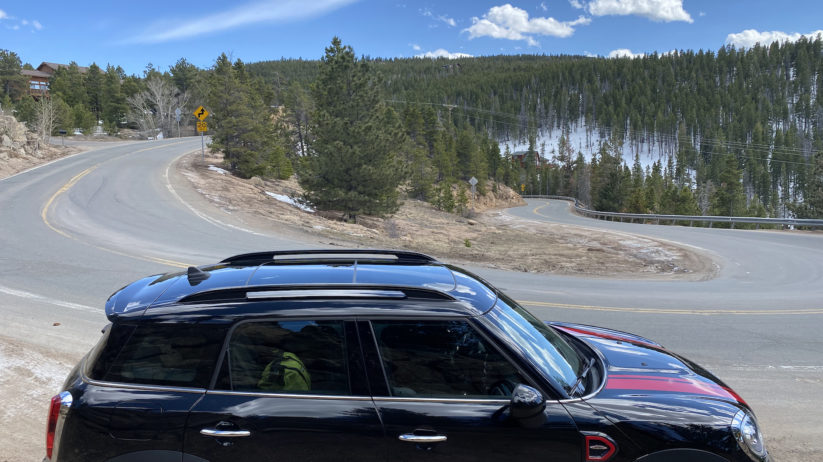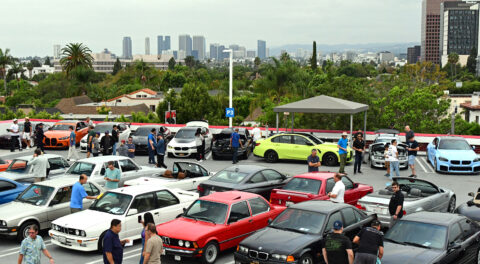When I moved to the Colorado mountains last year, I kind of lucked out: My commute to the office, back down in the flatlands, can follow any of four routes that take roughly the same time. Half of those options include some miles on unpaved roads, adding more variety to the commuting experience.
I should emphasize at the start that none of these routes is “the fast way” to anywhere; other more-developed highways serve that purpose. My roads are leftovers, or one-time feeders to remote ranches that were eventually connected end-to-end.
No matter the choice of road, one constant exists: a 3,500-foot change of elevation.
This drop—or, on the way home, the rise—occurs over roughly eighteen miles. The roads wind through canyons and over notches in mini-mountain ranges. Switchback follows switchback, some of them more than 180 degrees (because the civil engineers had to widen the curve area, but the efficient use of rock demanded that the curve exit be laterally very close to its entrance—just farther up or down the hill).
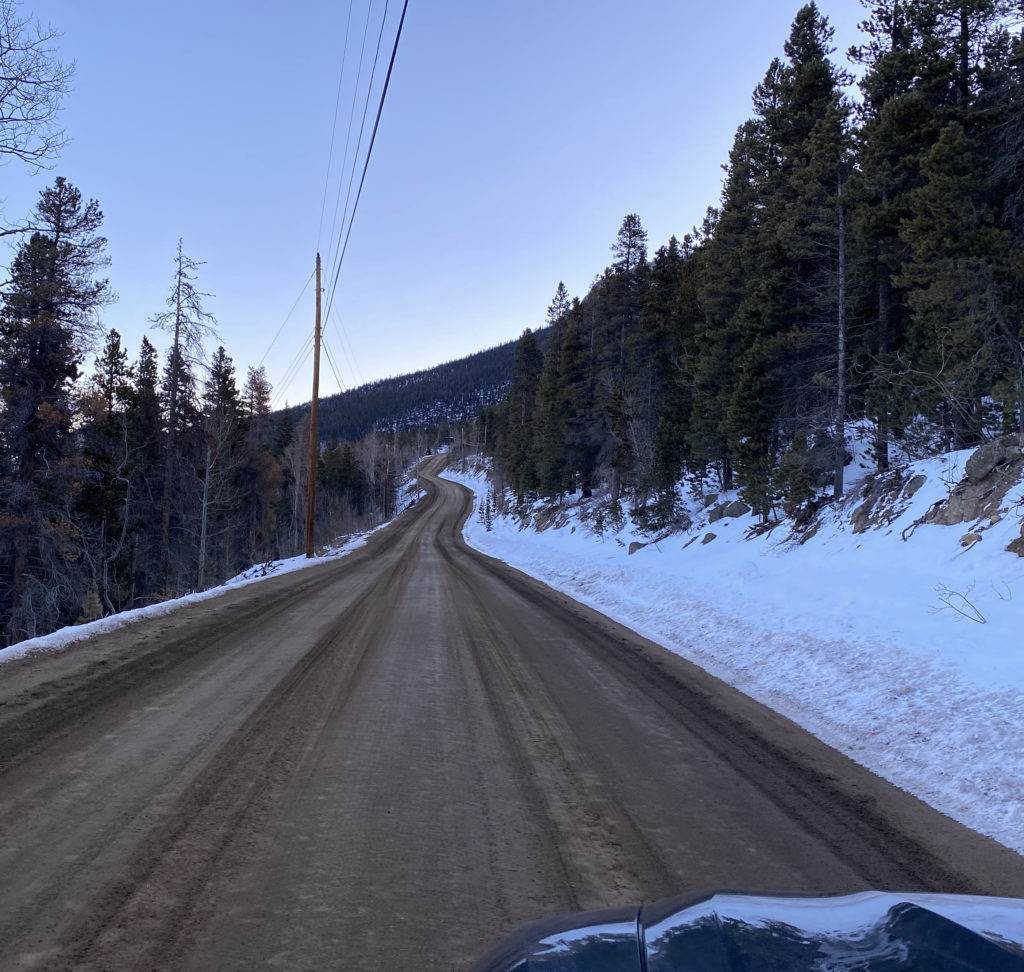
Although the speed limits—both the legal and the physical kind—are low, these roads make for challenging and entertaining driving. When there’s a bit of the white stuff (snow or ice) on them, even more so. Throw in the ever-present chance of wildlife or rockfall for dessert, and your mobility appetite is well satisfied.
Unless there’s traffic.
That still happens, even on the little-used roads. I’m not alone up here, nor am I the only one who treks down during our “rush hour.”
The wrong kind of traffic can drain all the goodness from a commute. Not all traffic is bad; goal-focused commuters, well familiar with the roads, don’t dally—and unlike most other drivers, they’re willing to pass. Many’s the time a white F250 has come up behind me in the morning, showing good speed in the straight bits. Unless I’m on the verge of the curves, I’ll pull over and let ’em fly. In fact, I’ll pause on the pullout for a bit, letting the distance between us increase. My schedule’s usually got some slack in it, and if I were in a hurry I’d be on the highway anyway. With open space ahead, my decisions—about braking points, and cornering speed, and gears—are easier—one fewer variable in the computation.
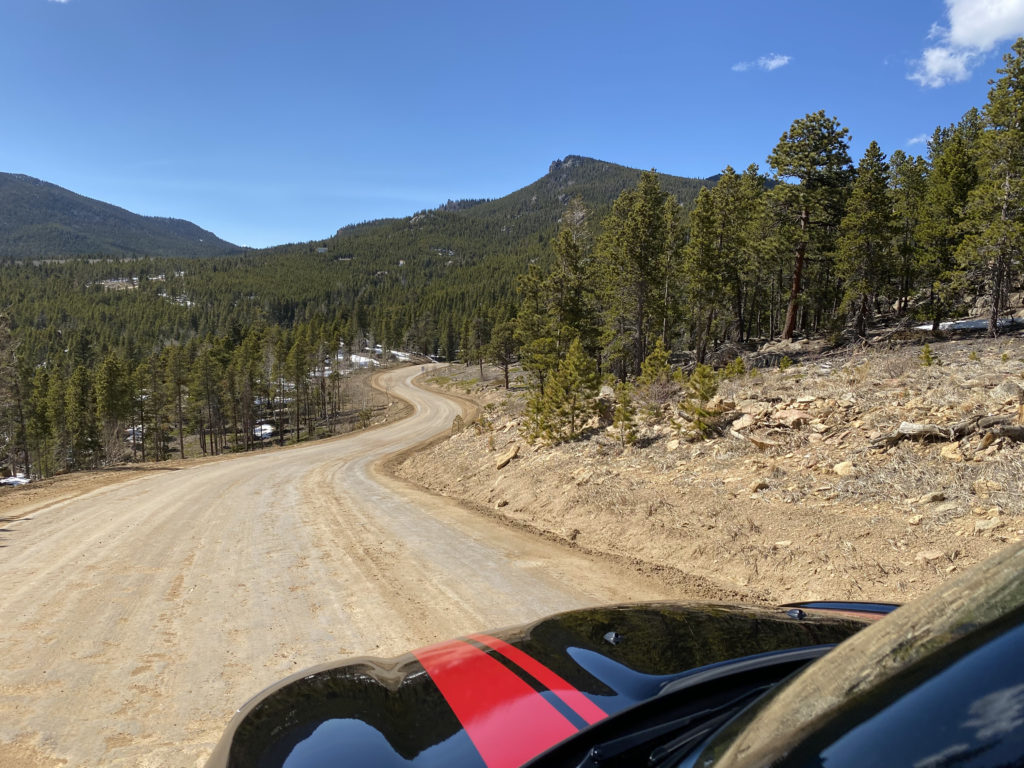
The other end of the traffic-types spectrum is harder to accommodate. Those drivers, collectively termed the “Ins” (for Inattentive, Incompetent, or Inconsiderate), don’t hustle, and they don’t help the flow. Inattention afflicts many, and not just with the smartphone or in-dash-video strains; modern cars and tires are so safe that the Inattentive are cocooned in cushioned envelopes, isolated from contact patches and the buildup of kinetic energy, swaddled and warm in machines wrought by determined engineers, never aware of the balance of forces (until the white stuff falls), and thus disengaged from their role in controlling two tons of rolling metal. It doesn’t even seem necessary to pay attention.
The Incompetent are similarly protected, and thus escape the Darwinian fate which would otherwise claim them. Their failing is mistaking the legal requirements for a driving license for the physical requirements of driving. Since the state issued me a license, they reason that I am by definition qualified, and I shall be renewedly qualified until I fail the vision test. I need do nothing more in the way of driver training; that’s for mail carriers and race-car drivers and people with too many tickets—definitely not me.
And the Inconsiderate, a malignancy that’s part-and-parcel of society: These are people who positively obstruct, and seem to take pleasure in doing so. It’s not just Americans; you can see the Inconsiderate all around the world on YouTube. These are the motor-homers and trailer-towers who crawl by the pulloffs with a dozen following cars. These are the “30–90s,” a Renéeism from my wife denoting their speed on uphills and downhills (or in passing zones) respectively. I think that they fear that they’ll lose something—status, manhood—if someone overtakes them.
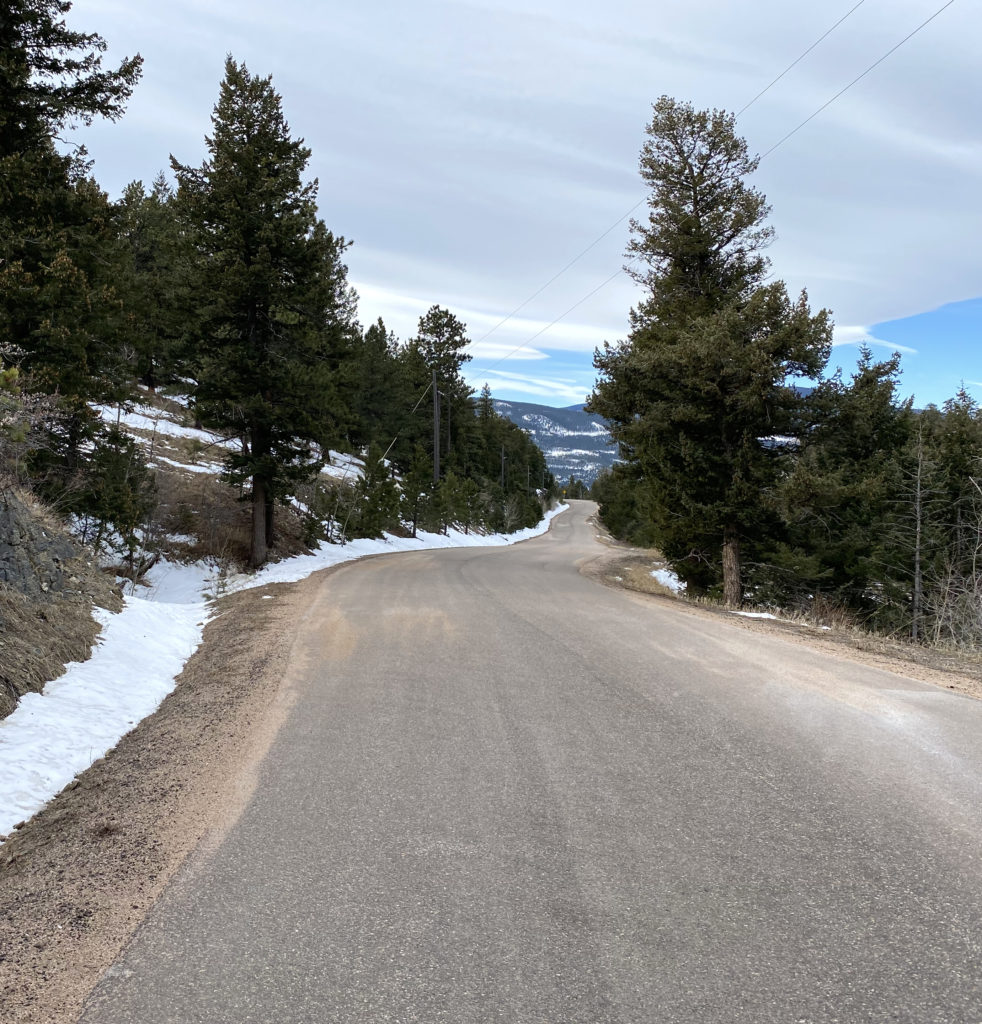
With some shame, I reveal that I used to pass the Ins with what they referred to in The Prisoner as degree absolute. It was always a bad practice. I see that now; I only got started because when I first discovered good roads, I could not afford good cars, but I could afford motorcycles. A motorcycle makes passing ridiculously easy and quick. I passed, and passed, and passed. A deeper sin: I disregarded lane markings, relying on vision instead.
I must have disturbed many people that I passed, or who were nearby while I was shooting the gaps. Some of those were Ins, but some—perhaps most—were not in that collection, but were rather thoughtful, cautious, good drivers going about their business. I can confess this now only through the lapse of years, and the gain of a tiny slice of self-awareness. I confess: I was an Inconsiderate. In fighting what I hated, I became that which I hated.
Today I treat the cars that I catch up to in a different manner: If a safe, calm, legal pass isn’t available, I pull over and stop. (Curiously, there is generally a lot of space between me and the next car back.) I let the distance grow between me and the car ahead, let the open space bloom, let the complication of another vehicle evaporate. This would be impractical if the road were busy, but I’ve selected roads and times to travel that mean that the roads aren’t busy. I have the luxury of waiting—and the subsequent, almost-immediate reward of a clear path. I care not who reaches the stop sign at the end first; I’d sooner be away from them than in front of them.
You know it’s going to be a good day when you reach the bottom of the eighteen-mile run down the canyon, and you can smell the brakes at the light.—Marinus Damm
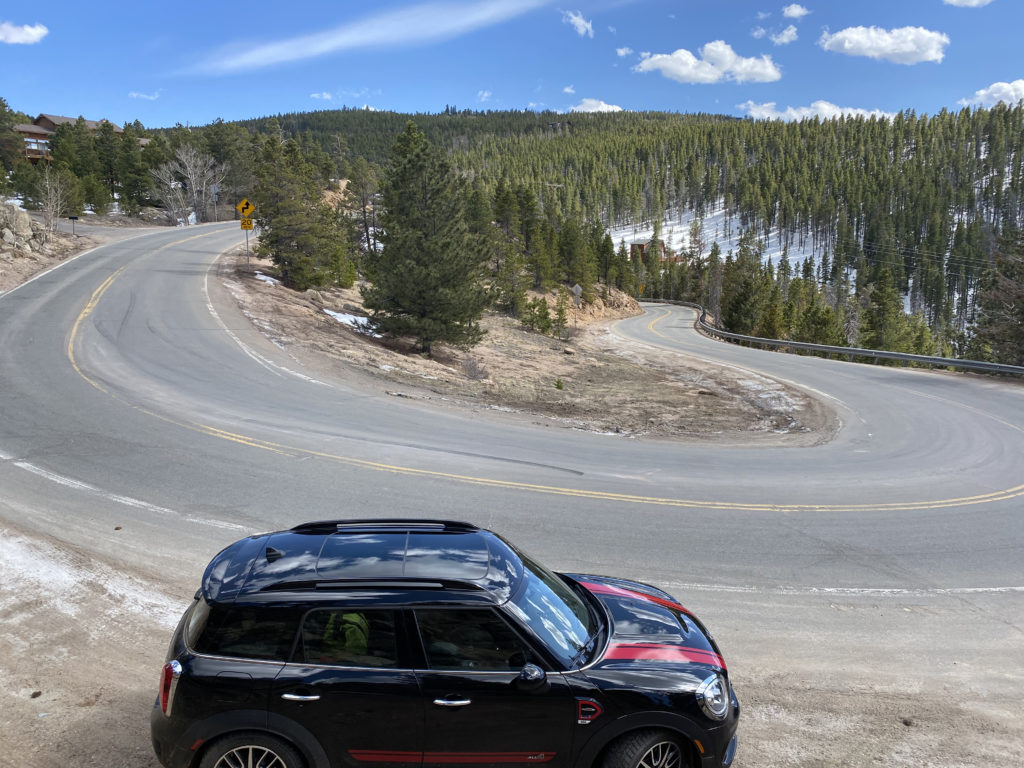
[Photos courtesy Marinus Damm.]

